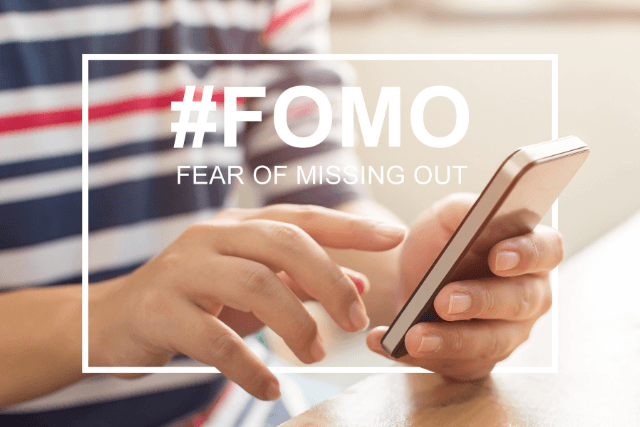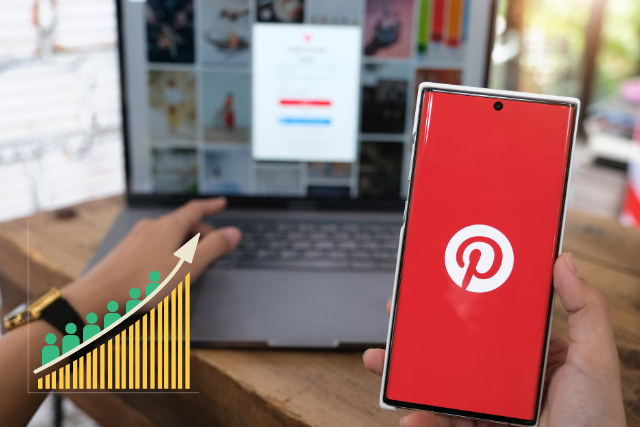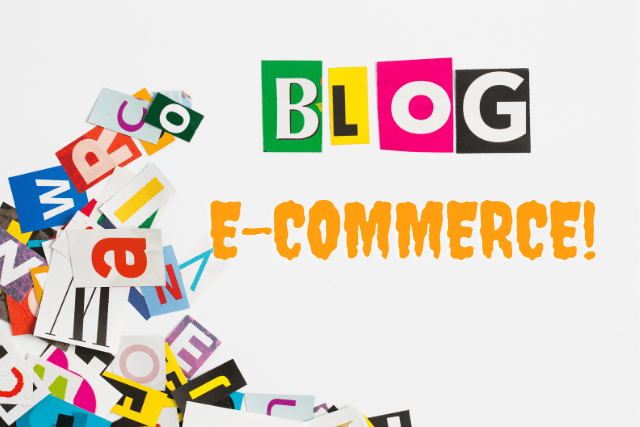Are you struggling to turn visitors into customers on your e-commerce website? If you’re finding that your online store isn’t generating the sales you expected, it might be time to focus on improving your conversion rates.
After all, a higher conversion rate means more sales and revenue for your business. But what if your conversion rate isn’t as high as you want?
Fortunately, there are several things you can do to improve conversion rates for your e-commerce store.
Table of Contents
Key Takeaways
- Optimize Product Pages: Use high-quality images, clear CTAs, and customer reviews to make your product pages persuasive and trustworthy.
- Streamline the checkout process: Offer a guest checkout option, use progress indicators, and minimize steps to reduce cart abandonment.
- Build Trust and Urgency: Display trust badges, provide contact information, and create a sense of urgency with limited-time offers and low-stock notifications.
- Prioritize Mobile Experience: Ensure your website is mobile-friendly to cater to the growing number of customers shopping on smartphones.
What is the Conversion Rate?
Conversion rate optimization (CRO) is a crucial aspect of e-commerce success. Conversion rate refers to the percentage of visitors to your online store who take the desired action, such as purchasing, signing up for a newsletter, or filling out a contact form.
The Importance of Conversion Rates
A high volume of website traffic is meaningless if it doesn’t result in conversions. Improving conversion rates ensures your business maximizes its potential revenue without relying solely on increasing traffic.
Here are some key reasons why conversion rates are essential:
1. Measure the Effectiveness of Marketing Efforts
Conversion rates help businesses gauge the success of their marketing campaigns. You can determine which marketing channels and strategies drive the most conversions by tracking conversion rates and adjusting your efforts accordingly.
This allows you to allocate your marketing budget more effectively and focus on the channels that generate the best results.
2. Improve User Experience
A high conversion rate indicates your website provides a positive user experience. By analyzing conversion rates, you can identify areas of your website that may be causing friction or confusion for users and make improvements. This can lead to a better user experience, increased customer satisfaction, and higher conversion rates.
3. Increase Revenue
Improving your conversion rate directly impacts your bottom line. Even a small increase in conversion rates can lead to a significant boost in revenue. For example, if your e-commerce store has a 2% conversion rate and can increase it to 3%, you’ve effectively increased your sales by 50%. This highlights the importance of continually optimizing your website and marketing efforts to improve conversion rates.
4. Gain a Competitive Advantage
A higher conversion rate can give your business a competitive edge. If your competitors have lower conversion rates, you can convert a higher percentage of your website visitors into customers. This can lead to increased market share and a stronger position in your industry.
5. Reduce Customer Acquisition Costs
Improving conversion rates can help lower your customer acquisition costs. By converting a higher percentage of your existing website traffic, you can generate more sales without investing in additional marketing efforts to attract new visitors. This can lead to a more cost-effective and efficient marketing strategy.
How to Improve Conversion Rates for Your E-commerce Store?
The success of an e-commerce store is heavily reliant on its conversion rate. A high conversion rate means that a larger percentage of your website visitors turn into customers, ultimately leading to increased revenue. In this blog post, we will discuss various strategies to help you improve the conversion rates for your store.
1. Optimize Your Website Design
A well-designed website can significantly impact your conversion rates. Here are some design elements to consider:
a. Mobile Responsiveness
Ensure your website is mobile-friendly, as many online shoppers use their smartphones to browse and make purchases. Implement responsive design techniques to ensure your website adapts to different screen sizes and devices.
b. Easy Navigation
Make it easy for users to find what they’re looking for by providing clear and intuitive navigation menus. Organize your products into logical categories and use descriptive labels for menu items.
c. High-Quality Images and Videos
Use high-quality product images and videos to showcase your products effectively. This helps build trust and encourages customers to make a purchase. Include multiple angles and close-ups to provide a comprehensive view of your products.
d. Fast Loading Times
Slow loading times can lead to higher bounce rates and lower conversions. Optimize your website’s performance by compressing images, minifying CSS and JavaScript files, and using a content delivery network (CDN).
2. Streamline the Checkout Process
A complicated checkout process can lead to cart abandonment. Simplify the process by:
a. Reducing the Number of Steps
Minimize the number of steps required to complete a purchase. Ideally, aim for a one-page checkout. Use progress indicators to show customers how far they’ve come and what steps are left. This reduces uncertainty and encourages completion.
b. Offering Guest Checkout
Guest checkout allows customers to purchase without the obligation of creating an account. It caters to those seeking a swift and hassle-free transaction, reducing any sense of commitment anxiety.
c. Providing Multiple Payment Options
Offer various payment options, including credit cards, PayPal, and other popular payment methods. This flexibility resonates with customers’ individual habits and financial preferences, diminishing any obstacles to purchase.
The convenience empowers customers and creates a seamless, positive experience that leads to higher conversions.
d. Saving Customer Information
Make it easy for returning customers to complete their purchases by saving their shipping and payment information. This feature not only streamlines repeat purchases but also builds trust.
Returning customers appreciate the convenience of not re-entering their details, while new customers perceive your brand as customer-centric and forward-thinking.
3. Build Trust with Social Proof
Social proof can help build trust and credibility with potential customers. Some ways to incorporate social proof include:
a. Customer Reviews and Ratings
Encourage satisfied customers to leave reviews and ratings after their purchase. Positive reviews can serve as powerful endorsements, while even critical reviews can provide opportunities for you to showcase your commitment to customer satisfaction through responsive and constructive engagement.
b. Testimonials
Testimonials from delighted customers carry immense weight in building trust. Feature snippets of testimonials on your website, highlighting customers’ positive experiences with your products or services. These anecdotes serve as authentic endorsements of your brand’s value proposition.
When selecting testimonials, choose those that resonate with your target audience’s pain points and aspirations. Showcase how your products or services have solved specific problems or enhanced their lives.
c. Trust Badges
Display SSL certificates, security seals, and any other relevant trust badges to signal that your website is secure and trustworthy. This visual affirmation fosters a sense of safety, assuaging potential customers’ concerns about sharing sensitive information.
When implementing trust badges, ensure they are prominently displayed on checkout pages, where customers provide payment details. This extra layer of security can instil confidence and eliminate doubts, minimizing cart abandonment and enhancing conversion rates.
4. Offer Incentives and Promotions
Incentives and promotions can help encourage customers to make a purchase. Some ideas include:
a. Free Shipping
Offering free shipping on orders above a specific threshold is a smart move. This eliminates the concern of added costs and positions your store as a hassle-free shopping destination. Moreover, free shipping can motivate customers to add more items to their cart to qualify.
Consider running limited-time promotions for free shipping, especially during peak shopping seasons. This can further incentivize customers to act swiftly, knowing they enjoy a special benefit.
The psychology of “saving” shipping costs can significantly impact purchasing decisions, leading to higher conversion rates.

b. Discounts and Sales
Periodic sales and discounts hold a timeless appeal for customers seeking value. Running well-timed sales on selected products can create a sense of excitement and urgency, driving customers to take advantage of reduced prices. Getting a product at a lower cost than usual can be a strong motivator.
Consider aligning discounts and sales with specific occasions such as holidays, seasonal changes, or special events when planning discounts and sales.
Combining these promotions with effective marketing campaigns and eye-catching visuals can amplify their impact, drawing in potential customers and converting them into buyers.
c. Bundling Products
Creating bundles that offer discounts when customers purchase complementary products entices them to explore more options and potentially increase their cart value.
For instance, if you’re selling fitness equipment, consider bundling a set of resistance bands, a yoga mat, and a water bottle at a reduced price. This encourages customers to purchase a complete workout package, benefiting their fitness routine and your sales figures.
Remember, while these incentives and promotions are powerful tools, their effectiveness lies in how well they resonate with your target audience. Tailor your offers to match the preferences and needs of your customers.
Always communicate the value they’re gaining through free shipping, reduced prices, or bundled savings. A well-executed incentives and promotions strategy not only boosts conversions but also establishes a positive perception of your brand in the eyes of your customers.
5. Utilize Retargeting and Remarketing
Retargeting and remarketing can help you reach potential customers who have visited your website but didn’t purchase. Some strategies include:
a. Email Marketing
Sometimes, a potential customer adds items to their cart, but they don’t proceed to checkout for some reason.
This is where personalized abandoned cart email campaigns come into play. By leveraging their contact information, you can send targeted emails to remind them about the items left behind.
In these emails, showcase the items they abandoned and emphasize their value. Consider offering incentives, such as discounts or free shipping, to sweeten the deal and motivate them to complete their purchase.
Use persuasive copy and engaging visuals that evoke the desire to own those items. Moreover, creates a sense of urgency by highlighting that the items are still available but might not last long.

b. Retargeting Ads
Retargeting ads work wonders by presenting your products or services to visitors browsing other websites or social media platforms.
By embedding a tracking pixel on your website, you can track user behaviour and display relevant ads to users who previously engaged with your site.
Platforms like Google Ads and Facebook are prime channels for deploying retargeting ads. For instance, if a user explores your range of fitness wearables, retargeting ads can display these same products in their social media feed or as banners on other websites they visit.
This consistent exposure gives a gentle nudge, reminding them of their initial interest and encouraging a return to your site.
Remember, the key to successful retargeting and remarketing lies in precision. Craft your messages and visuals thoughtfully, focusing on the user’s interest during their previous visit.
6. A/B Test and Optimize
Continuously test and optimize your website to improve conversion rates. Some elements to test include:
a. Headlines and Copy
Test different headlines and copy to see which versions resonate best with your audience.
b. Call-to-Action Buttons
Experiment with different colours, sizes, and text on your call-to-action buttons to determine what drives the most conversions.

c. Landing Pages
Create landing pages with different designs and content to see which performs best. By implementing these strategies, you can improve the conversion rates for your e-commerce store and ultimately increase your revenue. Optimization is an ongoing process, so continually test and refine your strategies to achieve the best results.
7. Implementing Effective FOMO Strategies
Limited-Time Offers
The psychological principle of scarcity comes into play here, leveraging the Fear of Missing Out (FOMO) to drive conversions. Introducing limited-time offers and time-bound discounts creates a sense of urgency among potential customers.
The ticking clock urges them to act swiftly to secure the deal before it expires. This urgency prompts hesitant shoppers to make a purchase sooner rather than later.
Low Stock Notifications
Incorporating low stock notifications taps into the same sense of urgency. Displaying alerts for products with limited availability informs potential buyers that the item is running out fast.
The notion that the product might soon be unavailable nudges them to make a quick decision, preventing the possibility of missing out.
This strategy encourages immediate action and fosters a stronger connection between customers and your store, as they perceive your offerings as valuable commodities.

Frequently Asked Questions
What is a good e-commerce conversion rate?
E-commerce conversion rates can vary by industry, but on average, a conversion rate of around 2-3% is considered reasonable.
How often should I update my product images and descriptions?
It’s a good practice to update your product images and descriptions whenever there are significant changes to the product or if you receive new and improved images.
What is FOMO, and how does it impact conversions?
FOMO stands for “fear of missing out.” It’s a psychological phenomenon where people are driven to take action due to the fear of missing out on something valuable, such as limited-time offers or low-stock items.
Can I improve conversion rates without offering discounts?
Yes, you can improve conversion rates without relying solely on discounts. Enhancing the shopping experience, providing detailed information, and building trust can all contribute to higher conversions.
How can I track my e-commerce conversion rates?
You can track your conversion rates using web analytics tools like Google Analytics. These tools provide insights into user behaviour, helping you understand how visitors interact with your website and where improvements are needed.
Conclusion
Conversion rates are crucial for online businesses. They measure marketing effectiveness, enhance user experience, boost revenue, gain a competitive edge, and cut customer acquisition costs. To achieve lasting success, businesses should optimise conversion rates through website and marketing improvements.
Improving conversion rates is a continuous process that involves refining your e-commerce store based on user behaviour and feedback. By optimizing your product pages, streamlining the checkout process, building trust, and implementing effective FOMO strategies, you can create a more compelling shopping experience that encourages visitors to become loyal customers.
There are a number of simple things you can do to boost sales and grow your business. Try implementing some of the tips we’ve listed above and see how they work for you!







